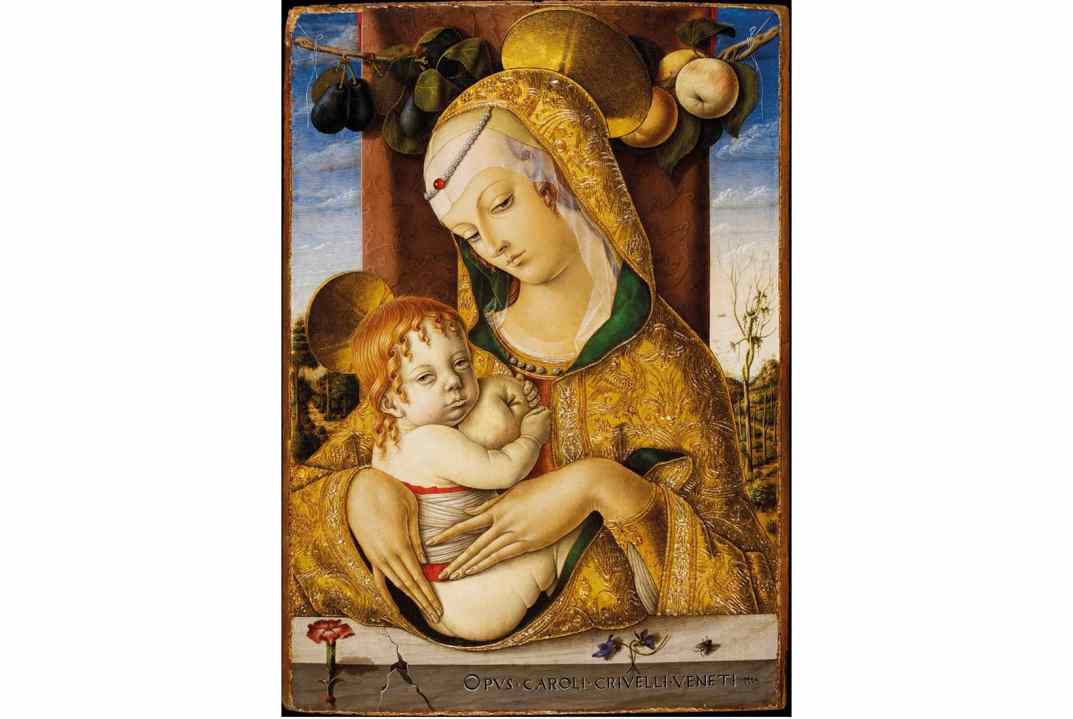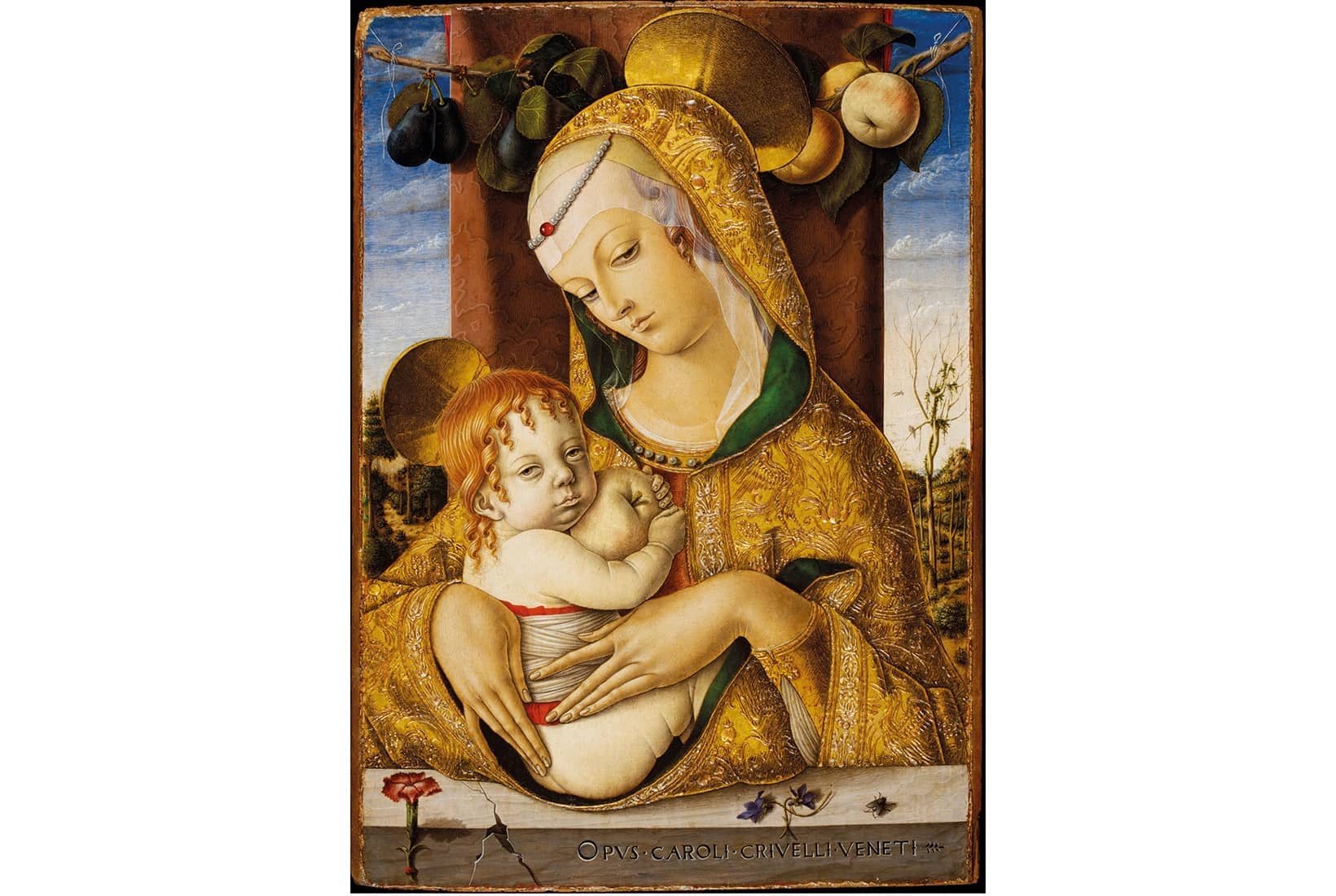‘Camp,’ wrote Susan Sontag, ‘is the paintings of Carlo Crivelli, with their real jewels and trompe-l’oeil insects and cracks in the masonry.’ She didn’t even mention the renaissance painter’s curious cucumber fetish. Nor the unwittingly comedic homoeroticism of his portrait of Saint Roch, one stocking rolled down coquettishly to reveal a decorous inner-thigh wound. Nor the extraordinarily ugly baby Jesus clutching an apple as big as his head while his mother, understandably, averts her eyes. ‘Camp is playful, anti-serious,’ argued Sontag.
Sontag wasn’t alone in not taking Crivelli (c.1430–95) seriously. Giorgio Vasari, who scorned the illusionism that some have taken to be Crivelli’s USP, erased him from his art history. Crivelli was Derren Brown with a paintbrush and so not fit to be mentioned in the same breath as Mantegna or da Vinci. Martin Davies, the director of the National Gallery in the late 1960s and early 1970s, despite presiding over one of the world’s best collections of Crivelli’s paintings, dismissed his work.

Get Britain's best politics newsletters
Register to get The Spectator's insight and opinion straight to your inbox. You can then read two free articles each week.
Already a subscriber? Log in








Comments
Join the debate for just $5 for 3 months
Be part of the conversation with other Spectator readers by getting your first three months for $5.
UNLOCK ACCESS Just $5 for 3 monthsAlready a subscriber? Log in